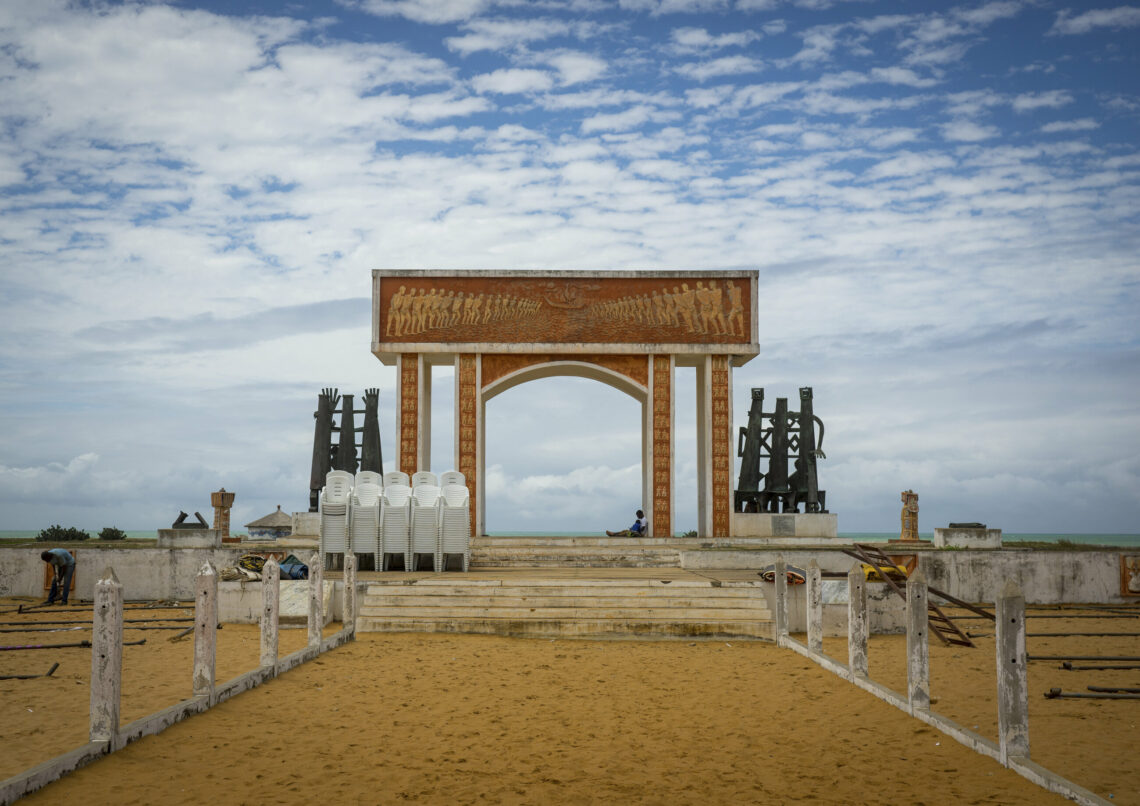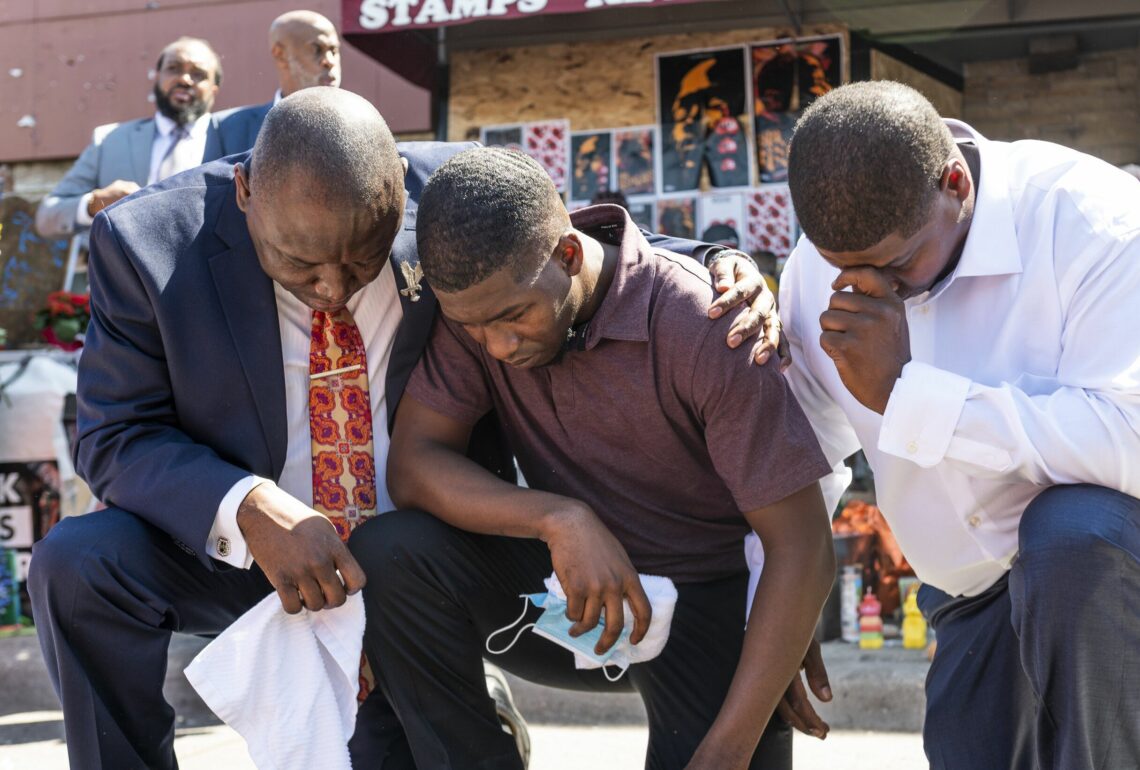Renewing the spirit of 2 George Yard (Part 1)
In 1787, a group of British thinkers opposing the transatlantic slave trade set in place what would later be described as the first contemporary human rights campaign. But, over two centuries later, the evils they decried very much remain a reality.

In a nutshell
- Modern human rights campaigning has its roots in abolitionism
- Injustices can be addressed through strategic collaboration
- 20th-century efforts to guarantee human rights are being undone
This report is the first in a two-part series on human rights from GIS Expert Lord David Alton. The second part will assess responses to the most salient human rights issues of the 21st century.
The first recognizably modern human rights campaign had its origins in a printing shop and bookstore at 2 George Yard in the City of London. The year was 1787. The abomination of the slave trade had drawn together a small group of like-minded people. But beyond that immediate cause, they also puzzled over what it meant to be human and on the duty to act, which falls on those privileged citizens who enjoy the freedoms denied to vast swathes of the human race.
Over the intervening 250 years, mankind has continued to demonstrate an infinite ability to inflict gross suffering on other human beings – the Holocaust, genocides, war crimes, totalitarianism and widespread denial of human dignity and rights. Yet, as those who gathered in 2 George Yard demonstrated, the vested and ideological interests which trade in human misery and subjugation do not have to have the last word.
Ending the slave trade
Of the dozen men who met in May 1787, nine were Quakers and one of the others, Thomas Clarkson, was a Cambridge University student who, after a religious experience, abandoned his studies and vowed to give his life to organizing opposition to the slave trade. Like Clarkson, a group of Quaker women had become greatly disturbed by the stories reaching England about the harrowing seizures and enslavement of West Africans, barbaric and perilous Atlantic voyages and the brutalities of the plantation owners.
Although motivated by religious sentiment, these doughty advocates knew that they had to be worldly – learn how to campaign, lobby and create a broad-based coalition way beyond their small circle of friends. So, they created the Society for the Abolition of the Slave Trade. The group set itself the task of changing hearts, minds and laws. To spearhead their legislative battles, it recruited a young member of Parliament, William Wilberforce. Notwithstanding fierce vested interest and opposition, by 1807 they had persuaded Parliament to abolish the transatlantic slave trade and, by 1833, to pass the Slavery Abolition Act. French political philosopher Alexis de Tocqueville said that what happened that day at 2 George Yard was “absolutely without precedent. … If you pore over the histories of all peoples, I doubt that you will find anything more extraordinary.”
Tocqueville was not simply referring to the desire for freedom or the enactment of just laws – after all, six centuries before the birth of Christ, Cyrus the Great had freed the slaves of Babylon, while, in England, the 13th-century battle for fair laws led to Magna Carta, paving the way for common law, the English Bill of Rights and the United States Constitution. What Tocqueville detected was the organization of a systematic civic, democratic campaign with the aim of defending the fundamental rights of other human beings. A group of like-minded and highly motivated people set out to change the world – and did just that.
The first human rights campaign
The campaign created techniques which human rights campaigners use to this day – usually beginning with the creation of a society or committee with a declared objective. The abolitionists may not have had the internet or social media, but it was no coincidence that their 1787 meeting was held in the printing shop where the Quakers published their tracts. A flurry of anti-slavery books, posters, pamphlets and prints were accompanied by huge public meetings across the towns and cities of England. There were petitions and boycotts of plantation sugar. Clarkson’s 1788 “Essay on the impolicy of the African slave trade” was followed by meetings at which he displayed the manacles and chains used to immobilize human cargo.
The campaign created techniques which human rights campaigners use to this day – usually beginning with the creation of a society or committee with a declared objective.
There were medallions and hair braids worn by thousands. They bore the words “Am I not a man and a brother?” – a phrase which provided the answer to the central question over which the group had puzzled at 2 George Yard: what does it mean to be human? Today we would call it the campaign’s slogan. The items on which they were engraved became fashionable, much like contemporary wristbands and T-shirts that everyone wants to wear. Public pressure began to manifest itself in Parliament and barely a year passed without yet another bill being introduced (and initially defeated, year after year) as an unanswerable case was gradually mounted.
I have personally stood at Zomai, in Benin, where, 200 years earlier, from among the captured slaves, sick, disabled or elderly people were picked out and thrown into a common grave. Some were buried alive. Those who became ill en route were thrown overboard from ships, like the infamous Zog. There, I was moved to stand at the Door of No Return with a small group of Black Americans who sang Amazing Grace, the hymn which the former Liverpool sea captain and slave trader John Newton had composed. At parliamentary hearings organized by Wilberforce, Newton described the graphic details of the murders on the Zog. The case for reform and change became unassailable.
But despite all this, the human rights argument – that each person had God-given rights because they were made in His image – continued to be contested and to meet fierce resistance from deep-pocketed vested interests. Campaigners today puzzle over why there is such opposition to taking a stand against China’s use of Uighur slave labor in Xinjiang. They need look no further than the bottom line of cheap goods and big profits. That was also what the George Yard abolitionists encountered.

Vested interests
Between 1701 and 1810 almost 6 million people were taken into slavery – with one in every four ships leaving Liverpool alone a slaver. The profits this generated were astonishing. In 1807 in Liverpool the slave trade accumulated a staggering 17 million pounds sterling. The vested interests pitted themselves against reform.
While calling out and exposing these practices along with the profiteering that accompanied it, Clarkson and an escaped slave, Olaudah Equiano, faced threats to their lives. They made powerful speeches up and down the land, exhibiting manacles and chains used to degrade and torture other human beings. To his eternal credit, the Liverpool MP, William Roscoe – poet, philanthropist and man of letters – joined the campaign against the trade, penning an epic poem “The Wrongs of Africa.” Having voted with Wilberforce in the House of Commons, he was physically attacked by the traders on his return home. But this first human rights campaign was successfully changing the attitudes of the populace and, through clever legislative measures, was effectively undermining the profitability of the trade.
The end of the 18th century was also a moment of religious revivalism. The political message was re-enforced by the ethical and moral arguments proclaimed in the new wave of chapels founded by the great preacher, John Wesley, who denounced slavery as “a scandal of England, of religion, of human nature.” The expedient default position of the trade’s supporters was the familiar argument that “if we don’t do it, someone else will.” It is still used to justify everything from the sale of arms and weapons to dictators to the purchase of goods made by slave labor. But it, too, became contested by more enlightened leaders of commerce and business who did not want blood on their hands. Tellingly, the great 19th-century pioneer of free trade, Richard Cobden, denounced both slavery and the opium trade (which brought ruination to China and phenomenal profits to the British East India Company), as evils which could not be justified in the name of trade or commerce.
It took these many voices to bring change. This first human rights campaign was not the achievement of just one man, but the coming together of a remarkable civic alliance combining secular and religious, parliamentarians and popular organizers, publicists, lawyers, academics and first-hand witnesses – including escaped slaves and traders like John Newton. The little group who had met in 2 George Yard in 1787 may not have anticipated it but, undoubtedly, the pebble they threw into the pond rippled across the world and has rippled across the centuries since.
Modern parallels
Some of the unhealed scars of that odious trade in human beings are still there to see in cities like Minneapolis where George Floyd, an African American man, was murdered by police in May 2020. Following the conviction of Derek Chauvin for murder, charges have now been brought against four ex-police officers for violating George Floyd’s civil rights. The Black Lives Matter campaign has convulsed America.
In the United Kingdom, protestors took to the streets of Bristol and pulled down an 18-foot-tall statue of the 17th-century slave trader, Edward Colston, and threw it into the harbor. Before doing so, one protestor pressed his knee against the statue’s neck, replicating the chokehold used by Mr. Chauvin during the murder of George Floyd. Colston is estimated to have been responsible for the transportation of over 84,000 Africans – and many of Bristol’s institutions were built on the proceeds and named after their benefactor.
But pulling down statues, renaming buildings, and what has been dubbed as “cancel culture” can easily become tokenistic and distort history while distracting from the painstaking and urgent need to defend 21st century human rights. Even universities, which have a duty to carefully seek truth, can foolishly become susceptible to cancel culture. Liverpool University’s crass decision to remove the name of William Ewart Gladstone (son of the city and Prime Minister four times) from one of its buildings is just one example. While it is true that Gladstone’s father had been involved in the slave trade, his son came to denounce it as “the foulest crime” and described abolition as one of the greatest achievements of the period. He was also an ardent opponent of the opium trade and champion of human rights of the Armenians, as well as the peoples of Ireland and the Balkans.
Scenarios
The toppling of Gladstone’s statue will bring little comfort to the more than 40 million people whom the International Labour Organization estimates are in some form of contemporary slavery. Nor will it help those caught up in human trafficking, forced labor, debt bondage and bonded labor, descent-based slavery, enslavement of children and young girls through forced early marriage. The beleaguered, enslaved Uighur Muslims of Xinjiang won’t be cheering either. Liverpool University has a partnership with Xi’an Jiaotong University in China and relies on Chinese students for 29 percent of its tuition fees, generating an estimated 89 million pounds in income from Chinese students (now 19 percent of its students) last year alone. While finding time to wrongly traduce the reputation of a 19th-century statesman, perhaps that helps explain its silence about contemporary slavery in China?







